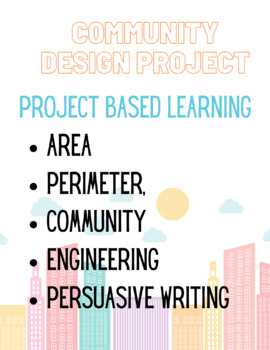'Design a 3-D Community' Project Based Learning PBL
Teaching on McCloud Nine
5 Followers
Teaching on McCloud Nine
5 Followers
Description
With Design your own Community PBL, students will have the chance to apply their math skills in a real world context while also reviewing civics and important community values. They'll be able to use their creativity to design their own town, while learning about perimeter, area, and volume. This is a great product for building teamwork and problem solving skills!
Total Pages
15 pages
Answer Key
N/A
Teaching Duration
N/A
Report this resource to TPT
Reported resources will be reviewed by our team. Report this resource to let us know if this resource violates TPT’s content guidelines.
Standards
to see state-specific standards (only available in the US).
CCSS3.MD.A.2
Measure and estimate liquid volumes and masses of objects using standard units of grams (g), kilograms (kg), and liters (l). Add, subtract, multiply, or divide to solve one-step word problems involving masses or volumes that are given in the same units, e.g., by using drawings (such as a beaker with a measurement scale) to represent the problem.
CCSS3.MD.C.5a
A square with side length 1 unit, called “a unit square,” is said to have “one square unit” of area, and can be used to measure area.
CCSS3.MD.C.6
Measure areas by counting unit squares (square cm, square m, square in, square ft, and improvised units).
CCSS3.MD.C.7a
Find the area of a rectangle with whole-number side lengths by tiling it, and show that the area is the same as would be found by multiplying the side lengths.
CCSS3.MD.C.7b
Multiply side lengths to find areas of rectangles with whole-number side lengths in the context of solving real world and mathematical problems, and represent whole-number products as rectangular areas in mathematical reasoning.


